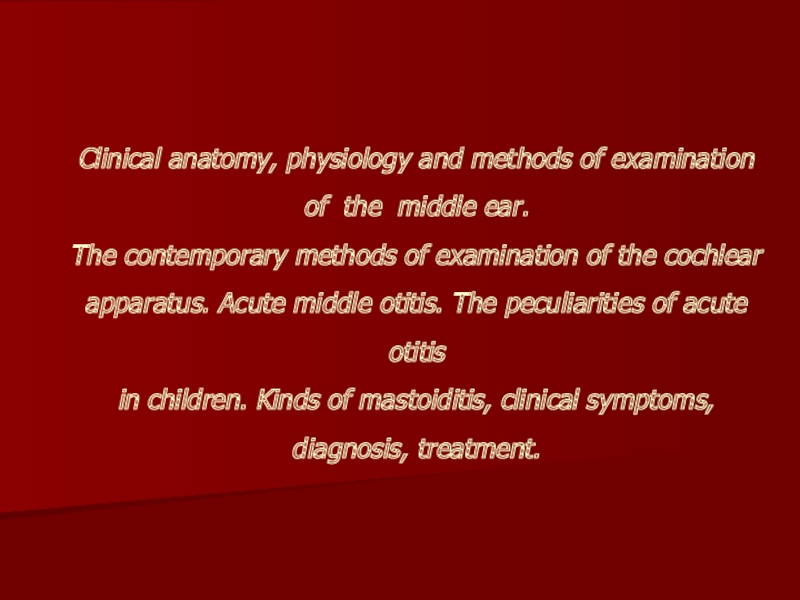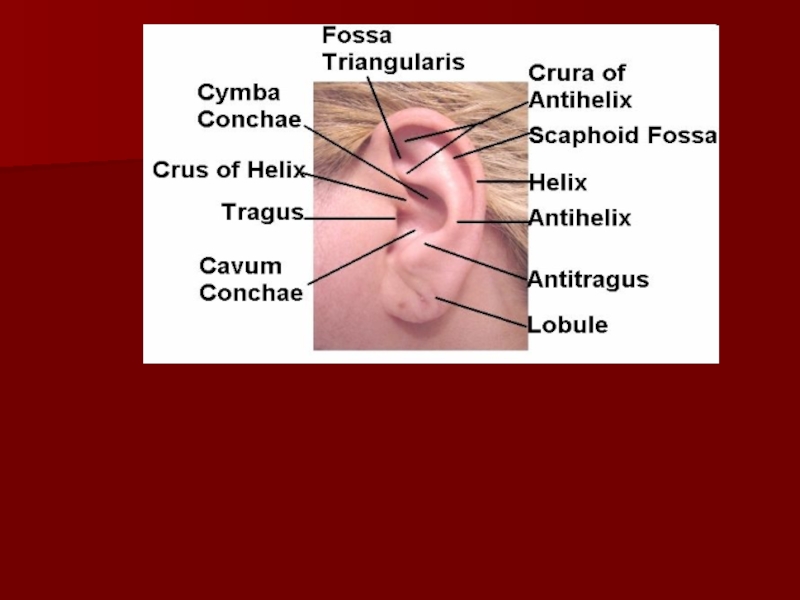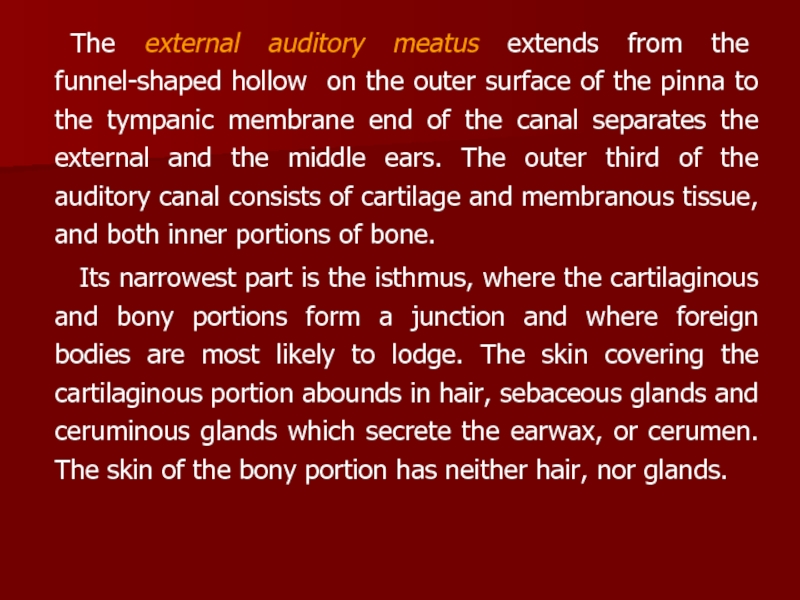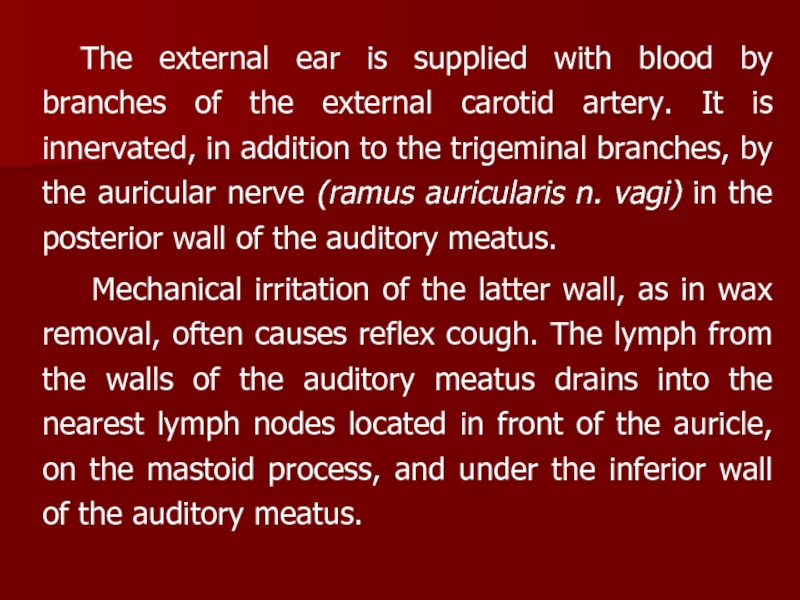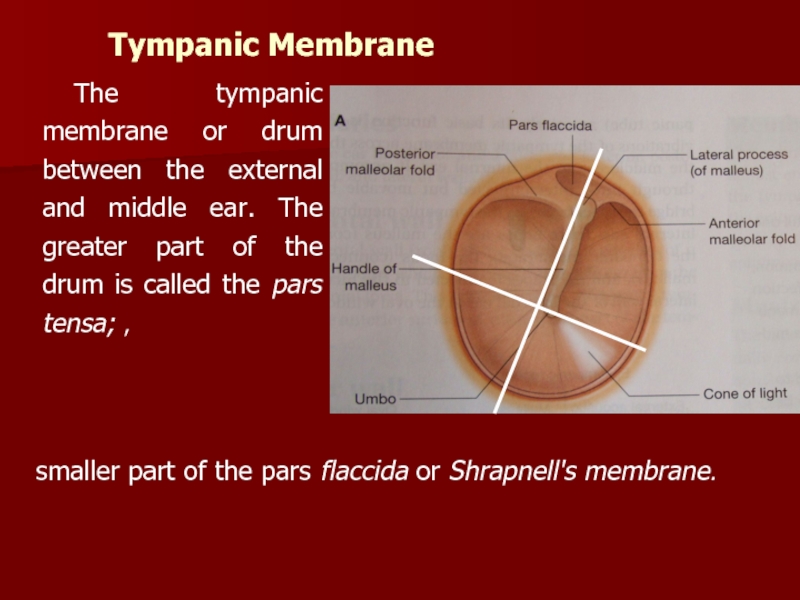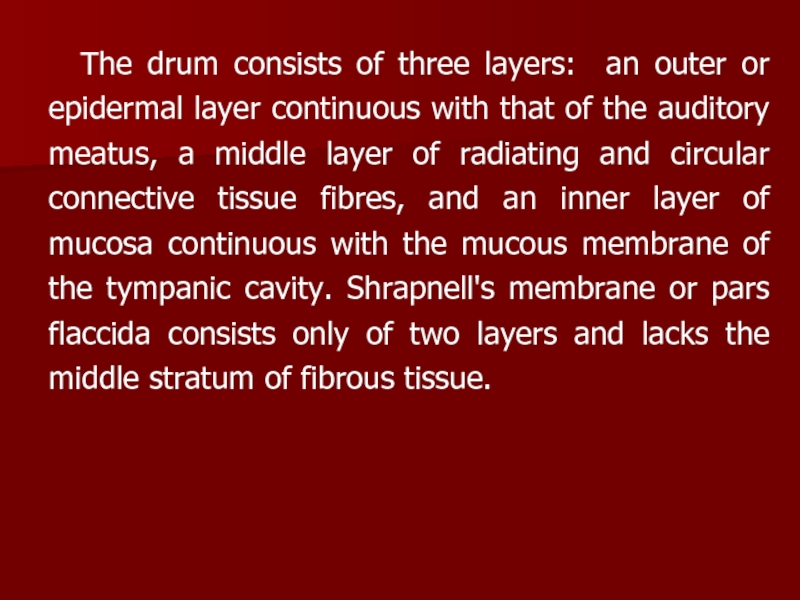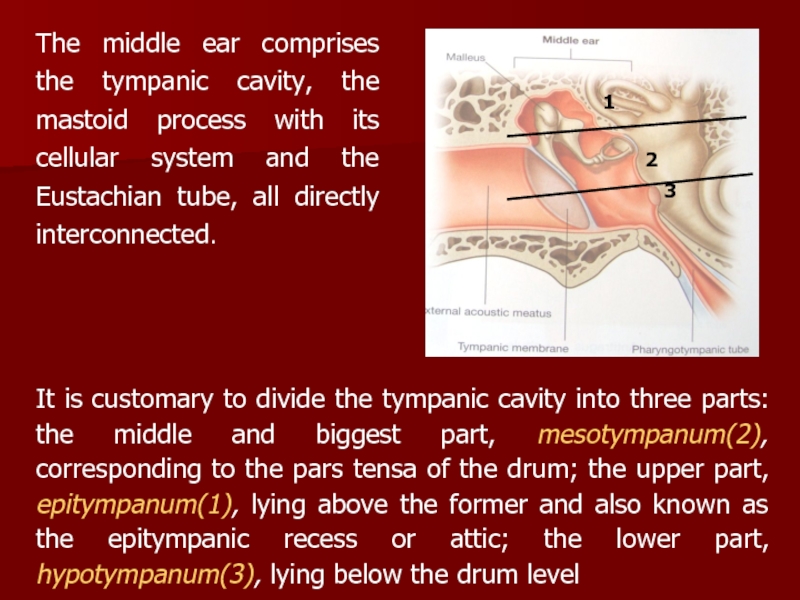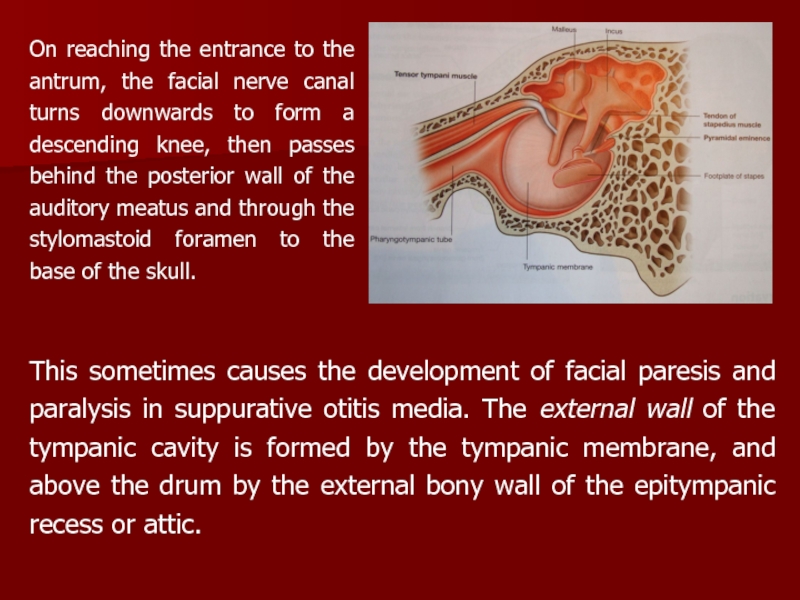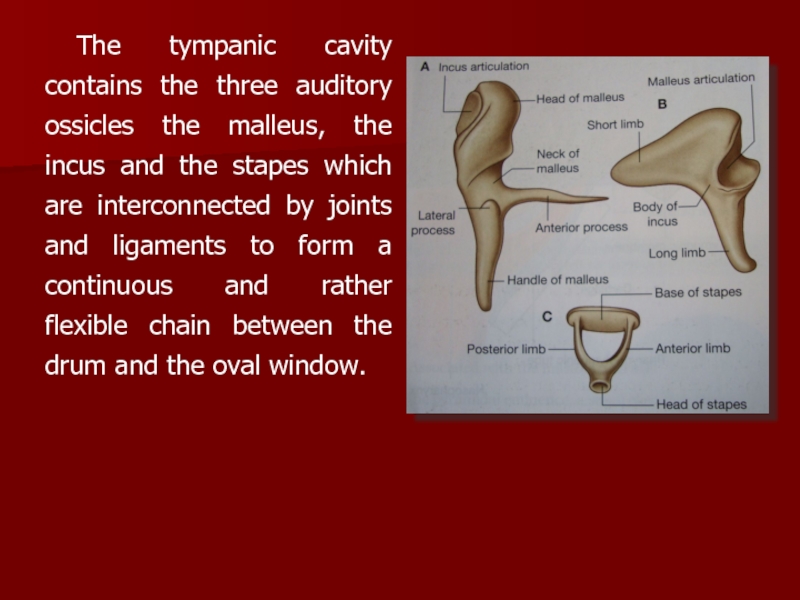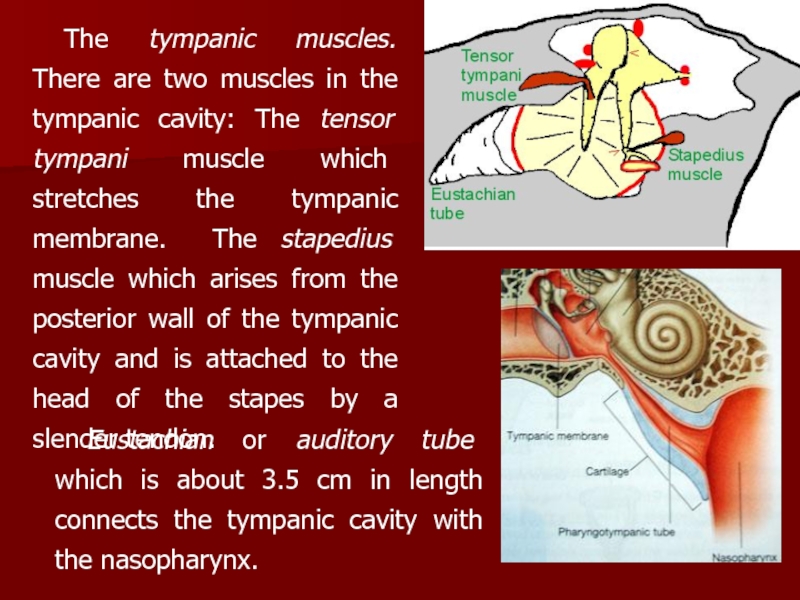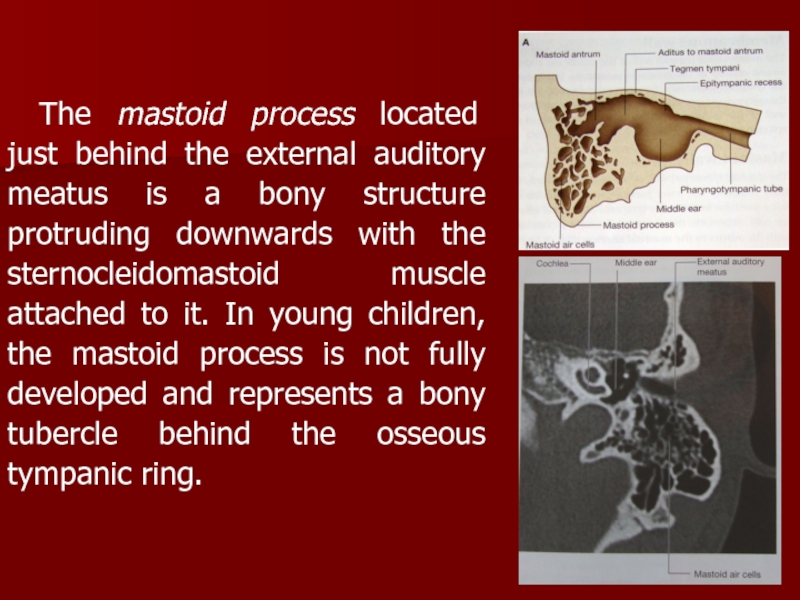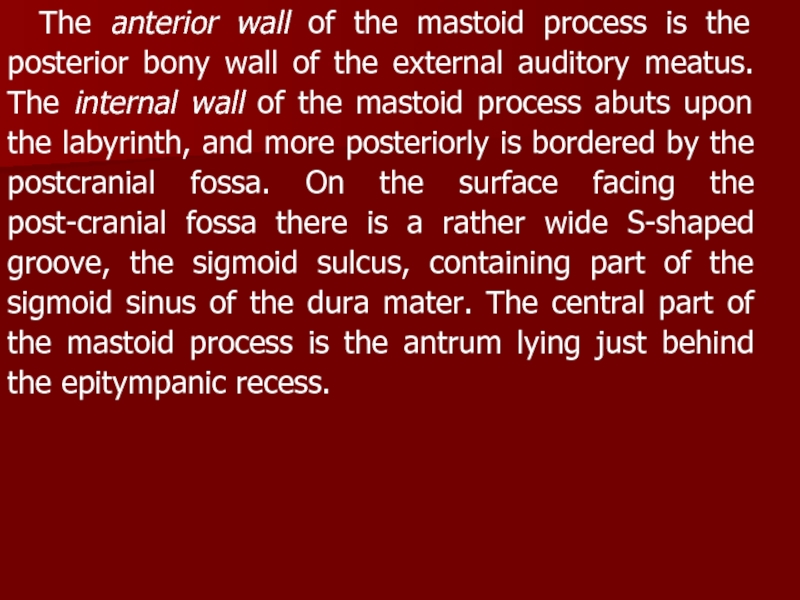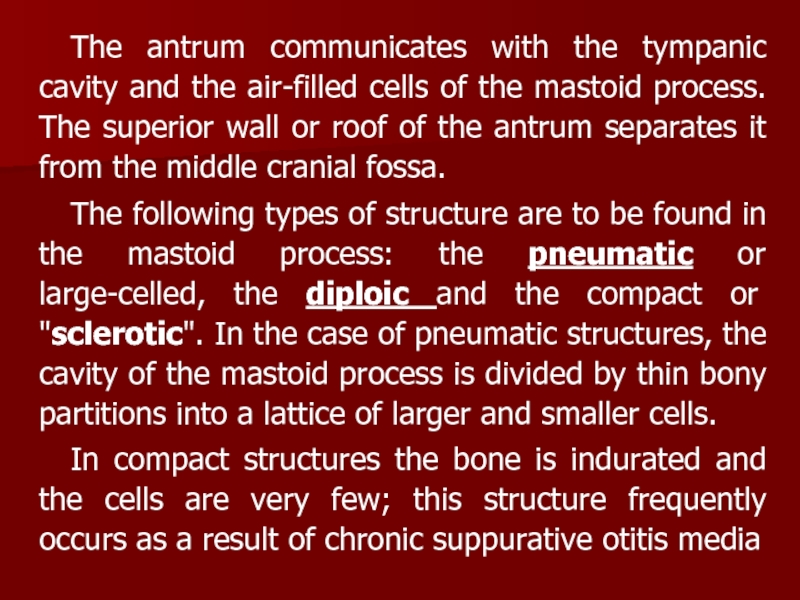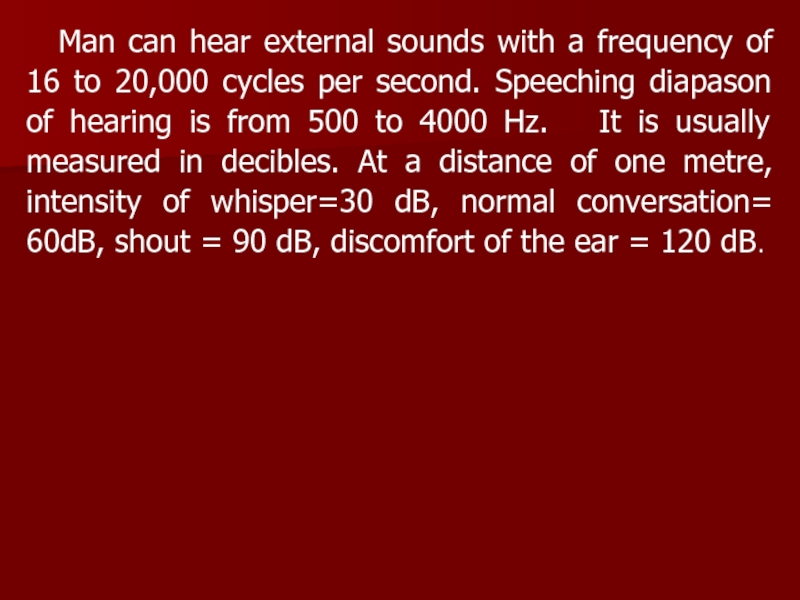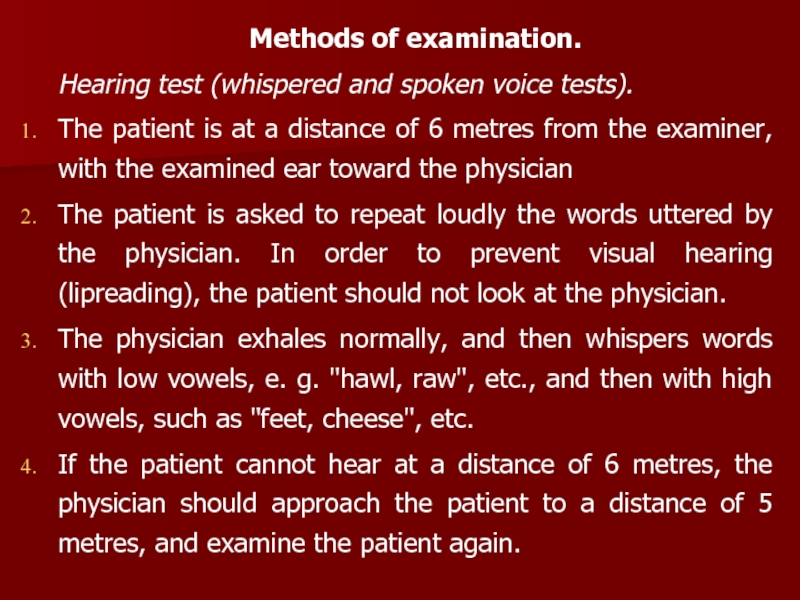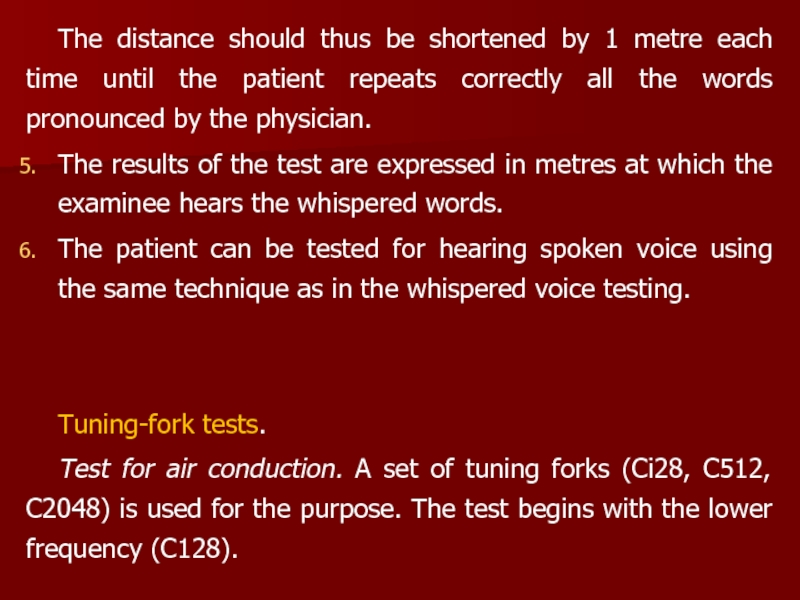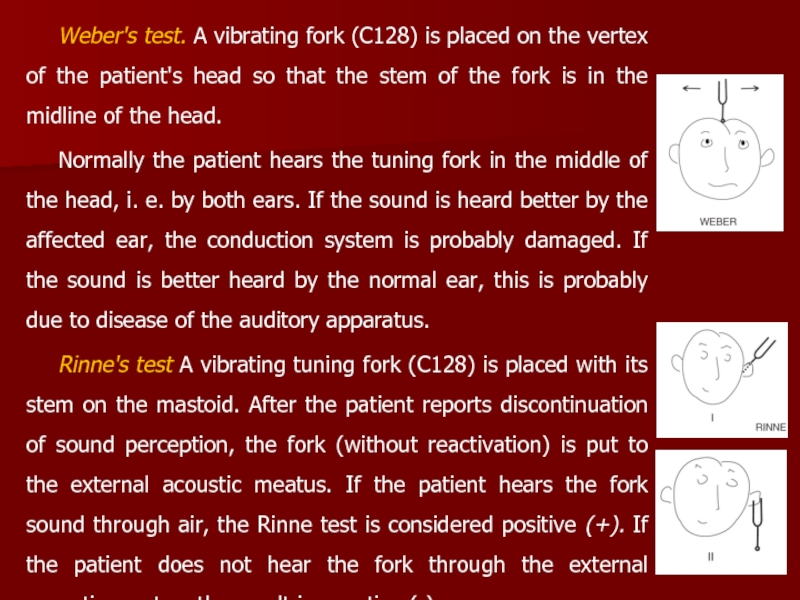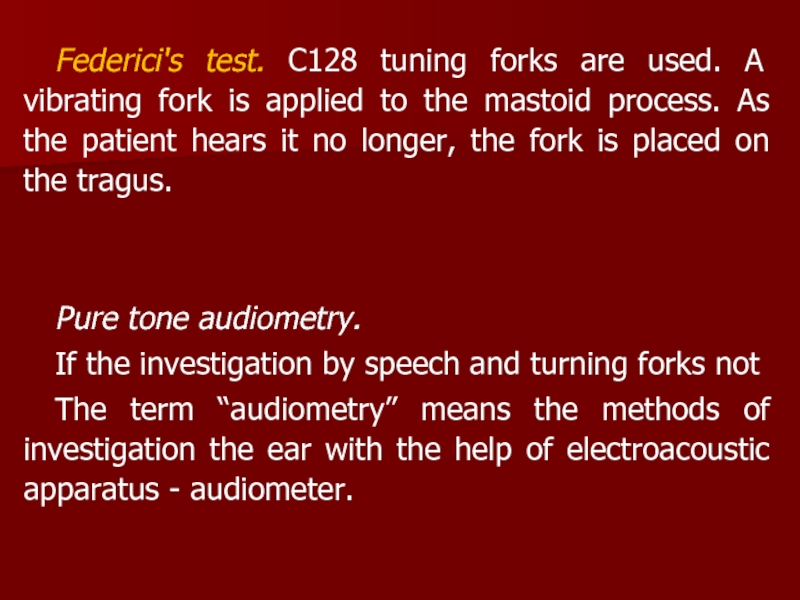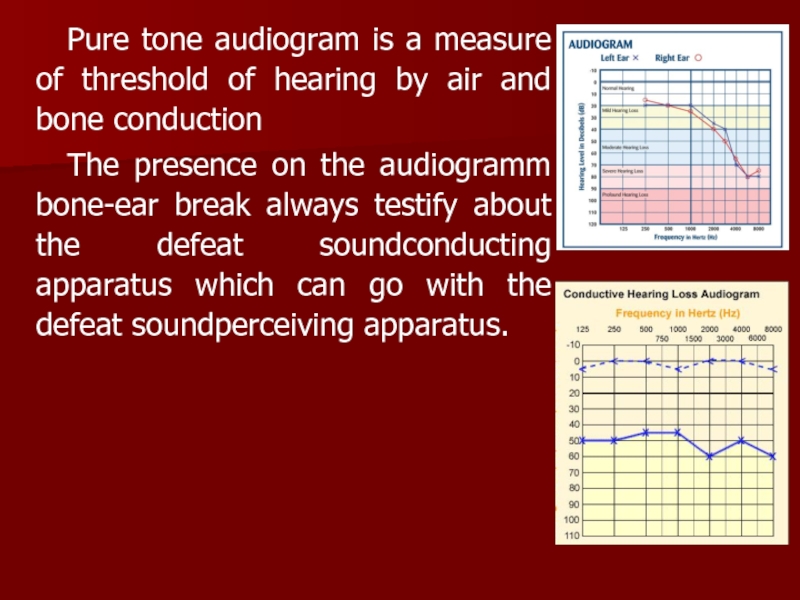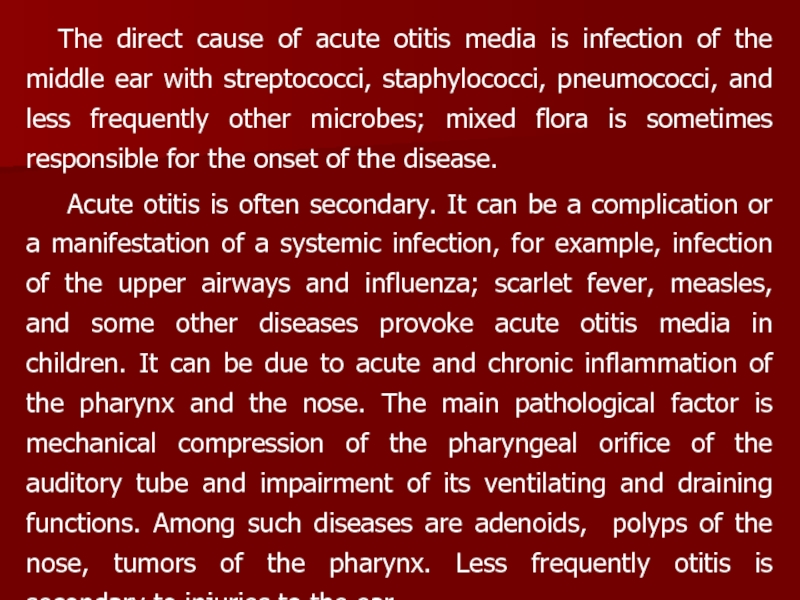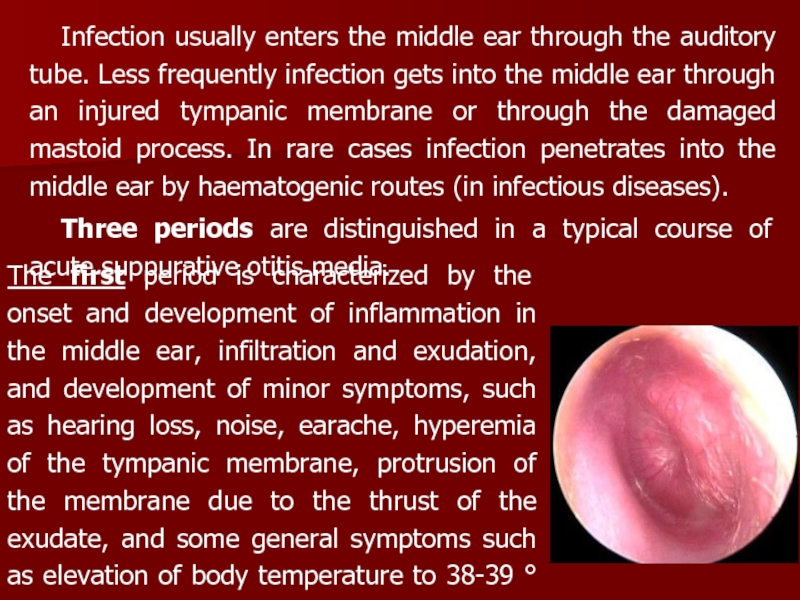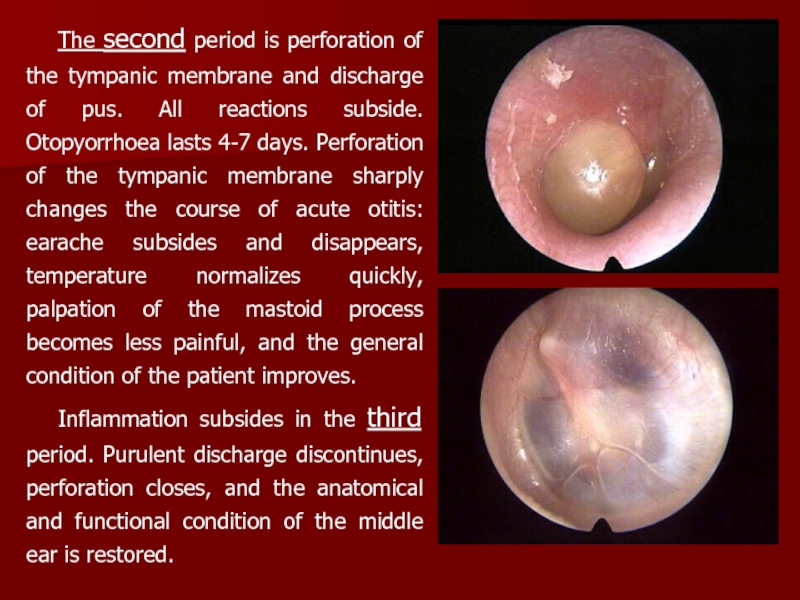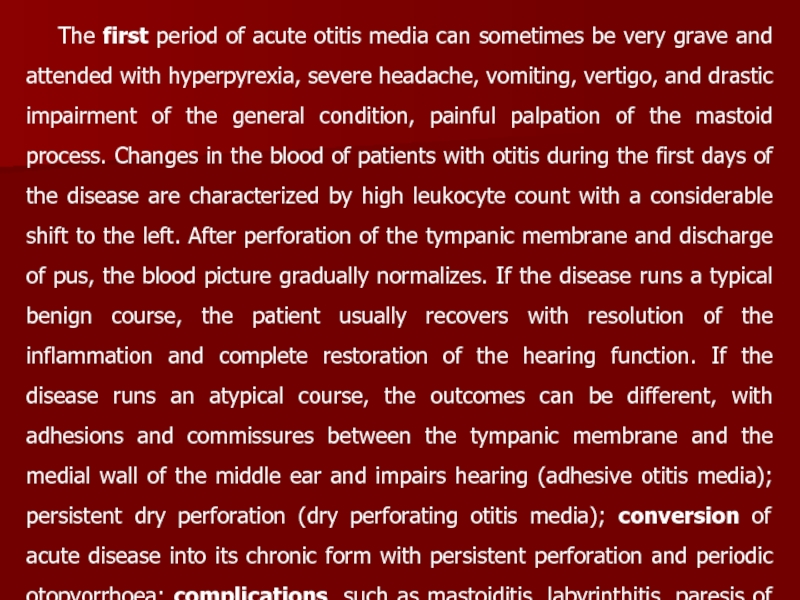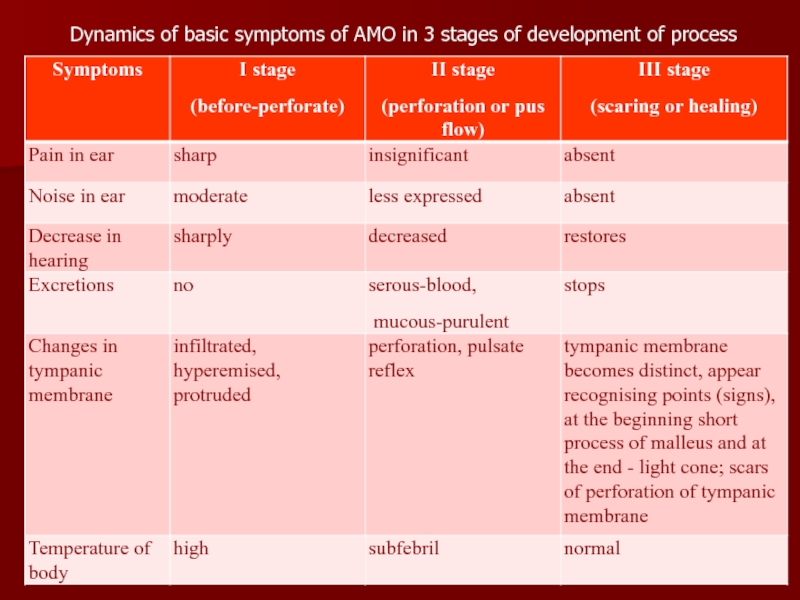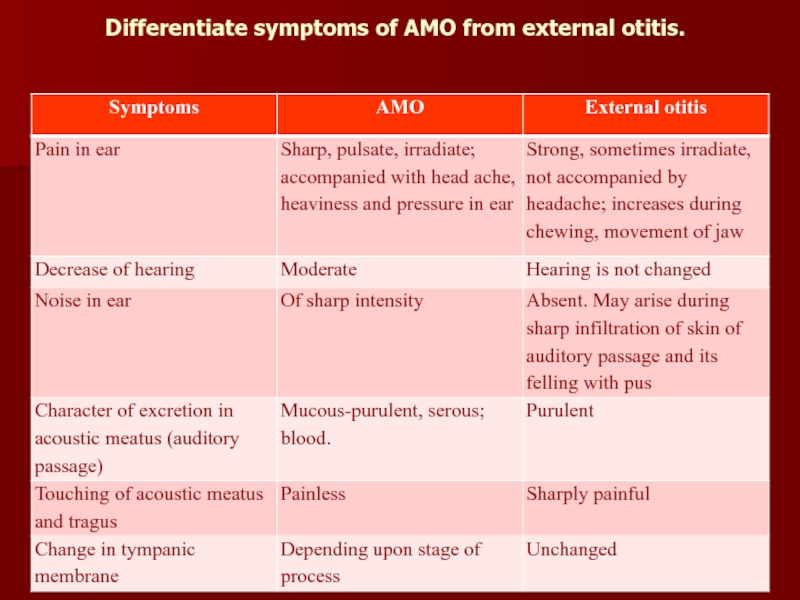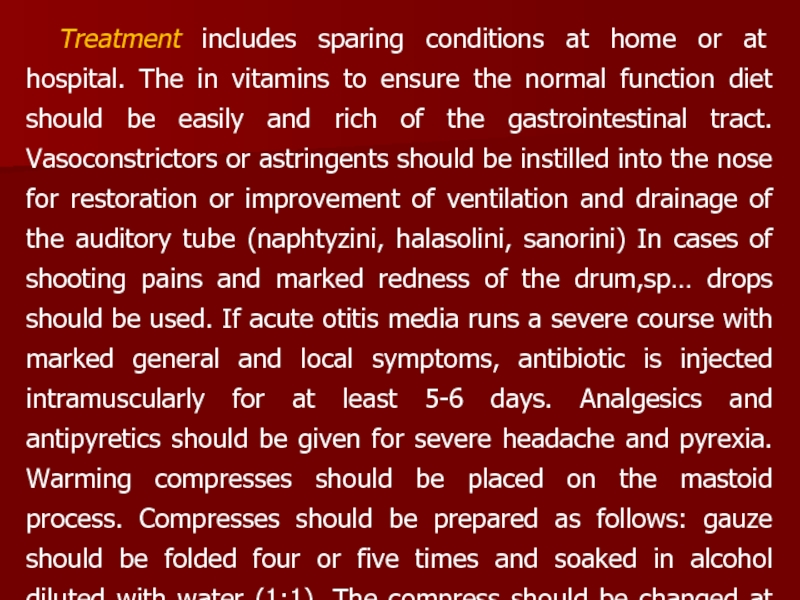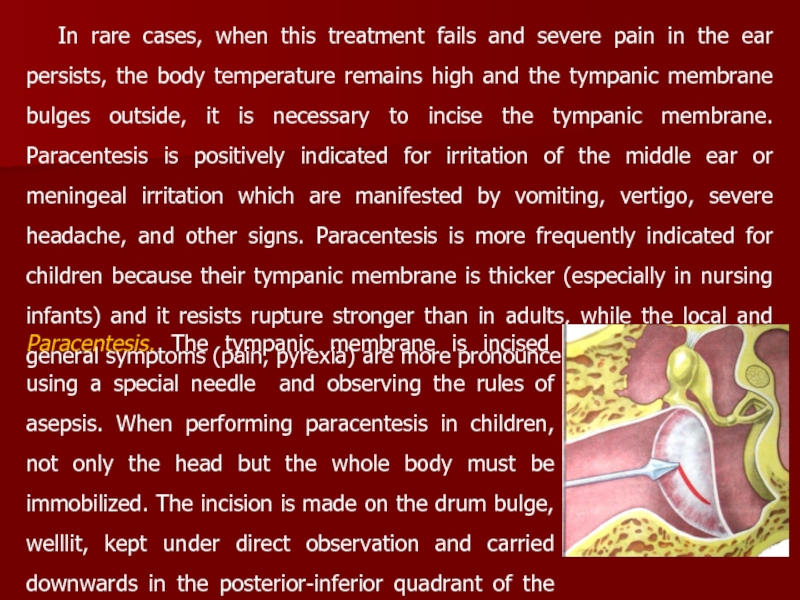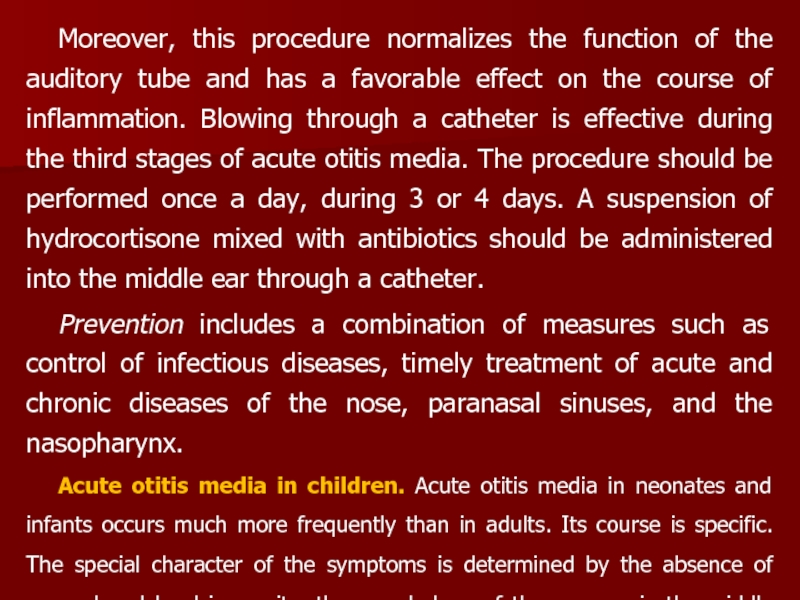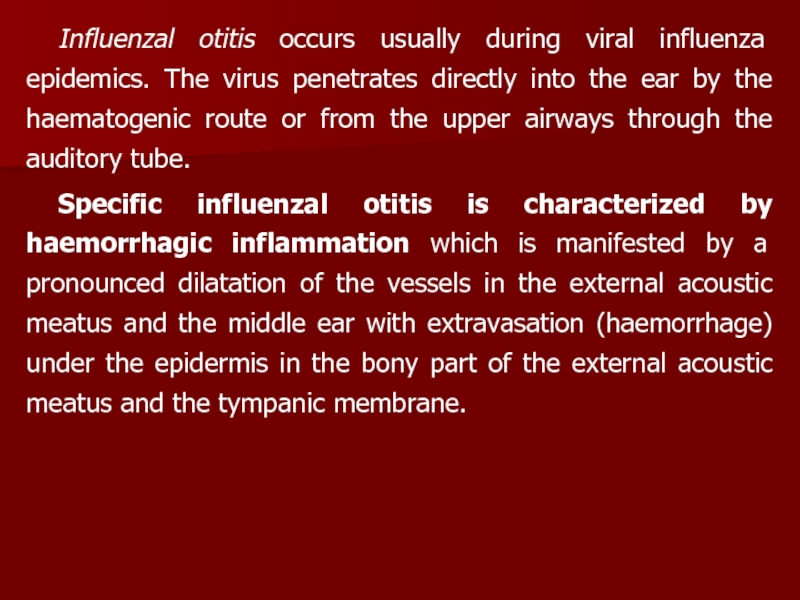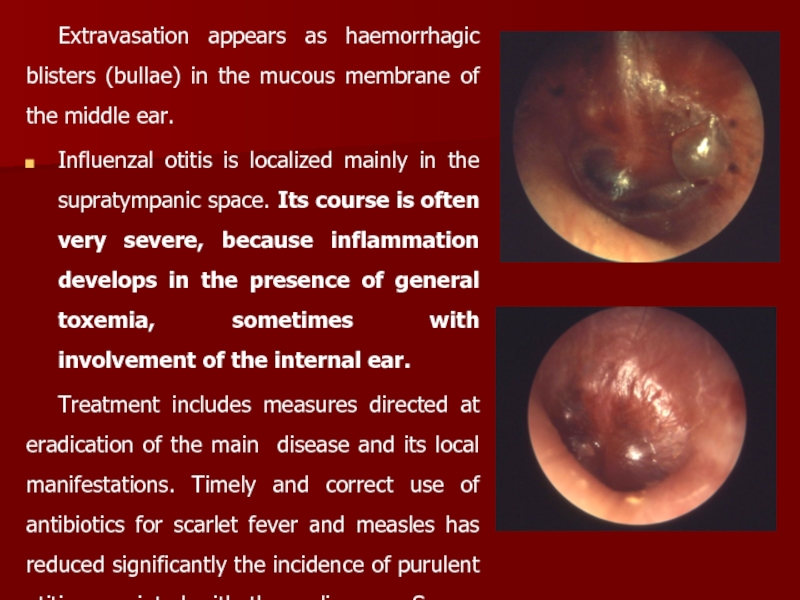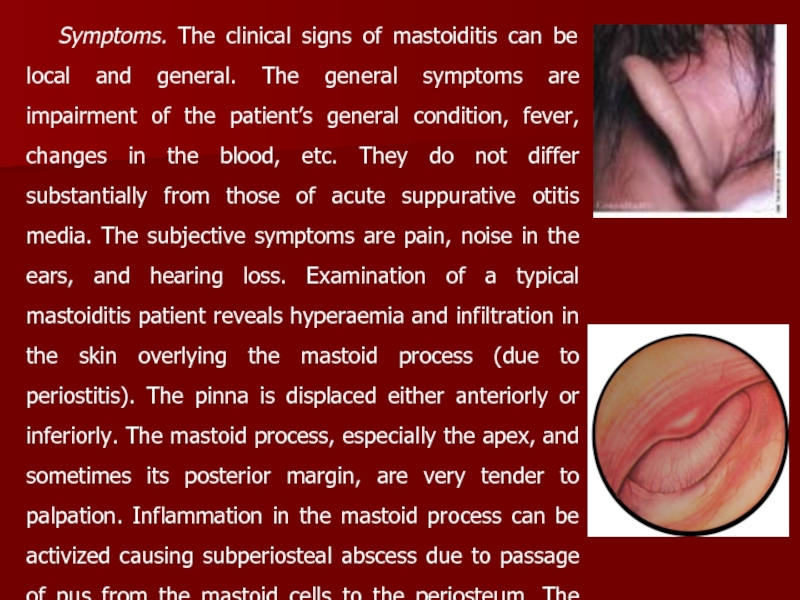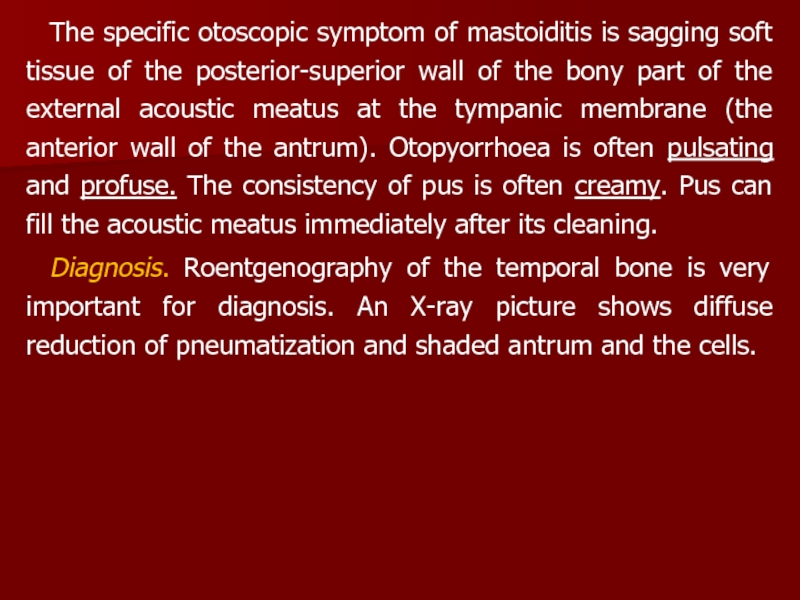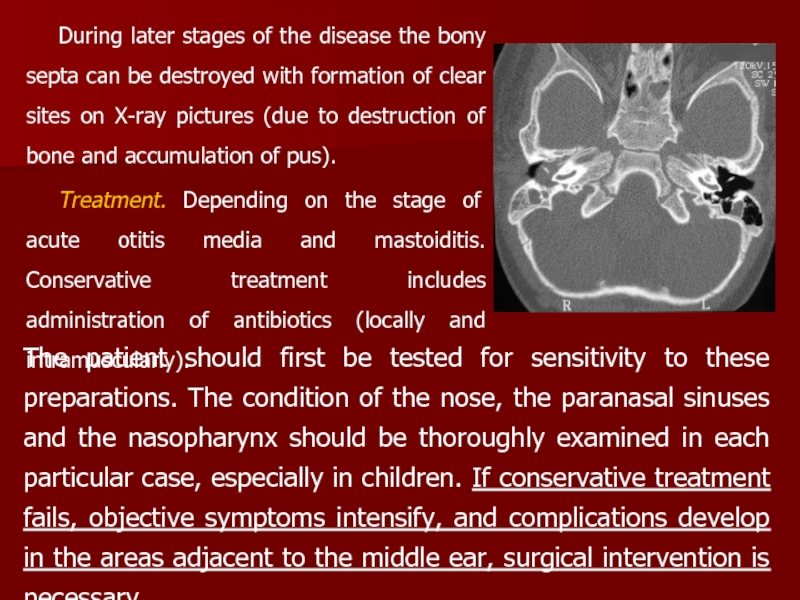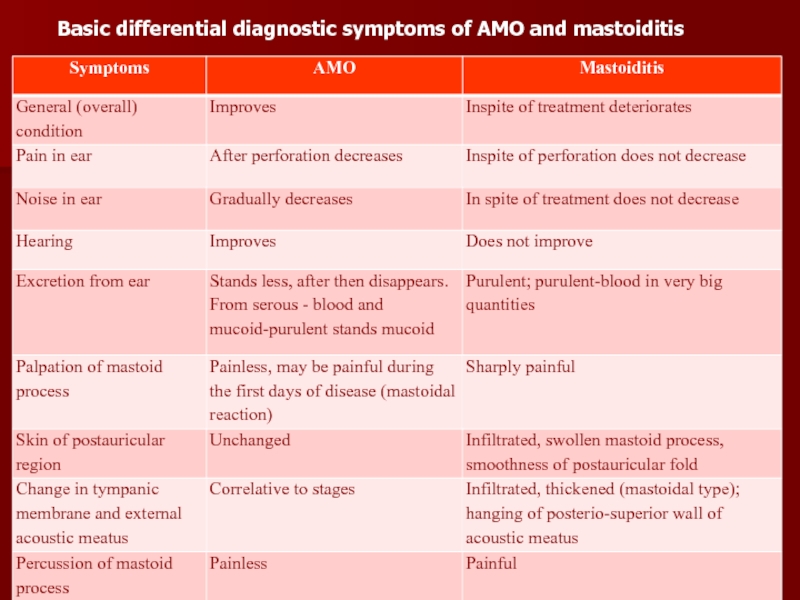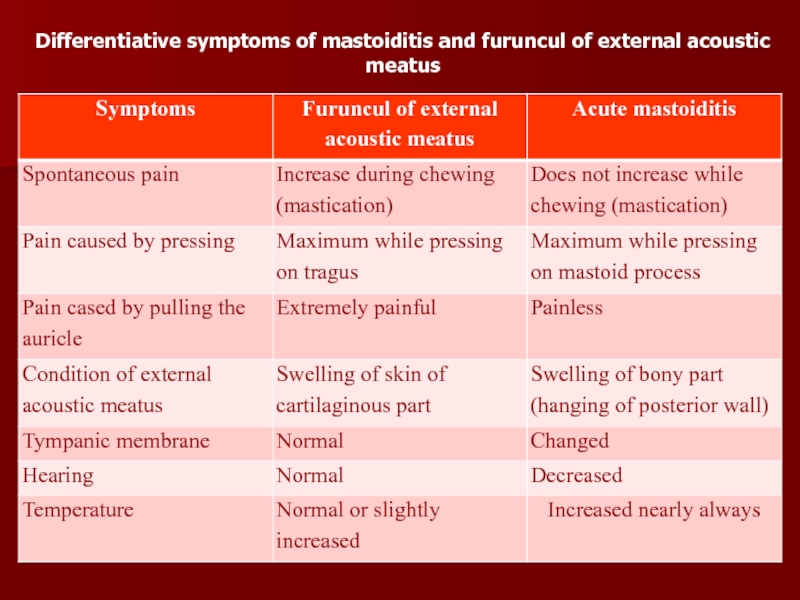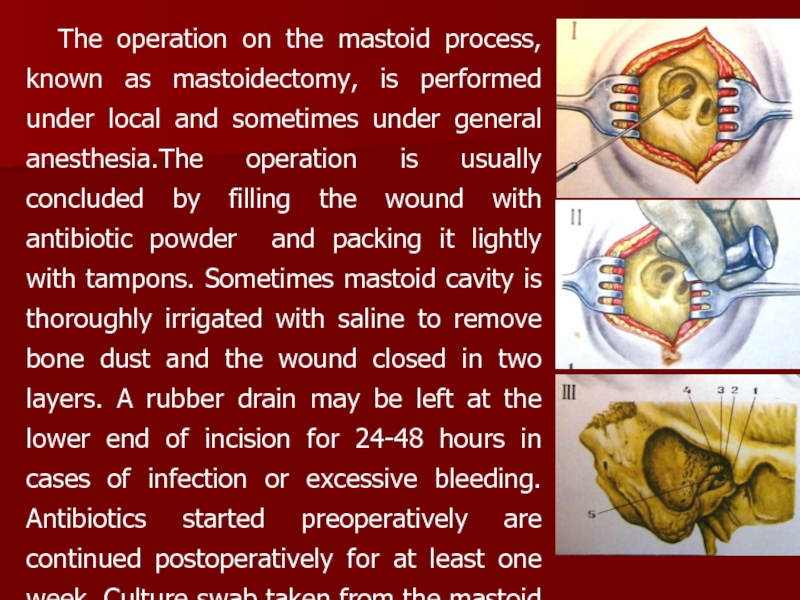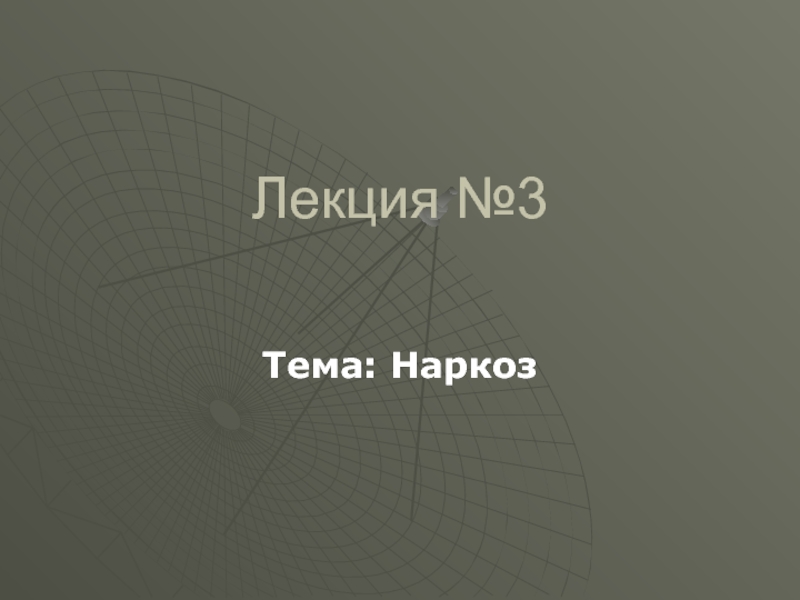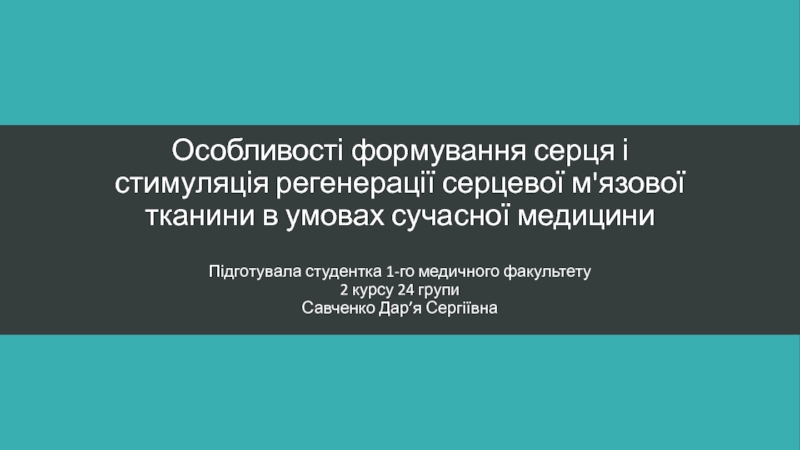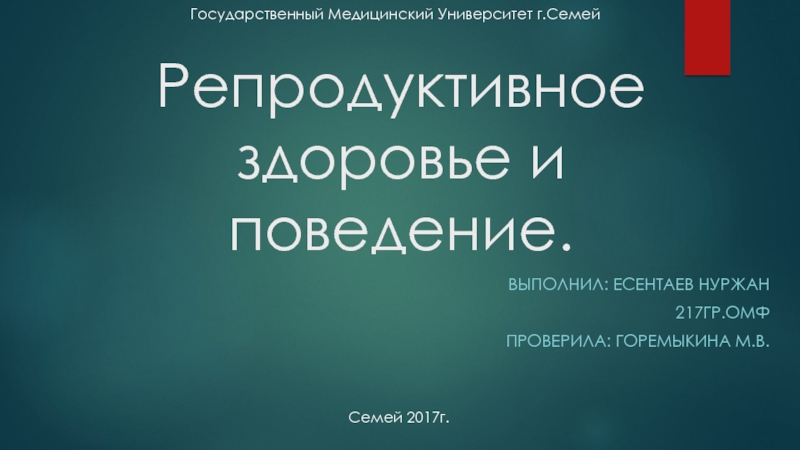- Главная
- Разное
- Дизайн
- Бизнес и предпринимательство
- Аналитика
- Образование
- Развлечения
- Красота и здоровье
- Финансы
- Государство
- Путешествия
- Спорт
- Недвижимость
- Армия
- Графика
- Культурология
- Еда и кулинария
- Лингвистика
- Английский язык
- Астрономия
- Алгебра
- Биология
- География
- Детские презентации
- Информатика
- История
- Литература
- Маркетинг
- Математика
- Медицина
- Менеджмент
- Музыка
- МХК
- Немецкий язык
- ОБЖ
- Обществознание
- Окружающий мир
- Педагогика
- Русский язык
- Технология
- Физика
- Философия
- Химия
- Шаблоны, картинки для презентаций
- Экология
- Экономика
- Юриспруденция
Clinical anatomy, physiology and methods of examination of the middle ear презентация
Содержание
- 1. Clinical anatomy, physiology and methods of examination of the middle ear
- 2. Actuality of the theme. Acoustic analysator is
- 3. External and middle ear Organ of
- 5. The external auditory meatus extends from the
- 6. parotid gland middle cranial fossa ; The
- 7. The anterior wall adjoins the articular head
- 8. The external ear is supplied with blood
- 9. Tympanic Membrane The tympanic membrane or drum
- 10. The drum consists of three layers: an
- 11. The middle ear comprises the tympanic cavity,
- 12. An opening in the upper part of
- 13. On reaching the entrance to the antrum,
- 14. The tympanic cavity contains the three auditory
- 15. The tympanic muscles. There are two muscles
- 16. The mastoid process located just
- 17. The anterior wall of the mastoid process
- 18. The antrum communicates with the tympanic cavity
- 19. Man can hear external sounds with a
- 20. Methods of examination. Hearing test (whispered
- 21. The distance should thus be shortened by
- 22. Weber's test. A vibrating fork (C128) is
- 23. Federici's test. C128 tuning forks are used.
- 24. An audiometer is an electronic device which
- 25. Pure tone audiogram is a measure of
- 26. ACUTE OTITIS. Acute purulent middle otitis
- 27. The direct cause of acute otitis media
- 28. Infection usually enters the middle ear through
- 29. The second period is perforation of the
- 30. The first period of acute otitis media
- 31. Dynamics of basic symptoms of AMO in 3 stages of development of process
- 32. Differentiate symptoms of AMO from external otitis.
- 33. Treatment includes sparing conditions at home or
- 34. In rare cases, when this treatment fails
- 35. Special conditions must be provided for unobstructed
- 36. Moreover, this procedure normalizes the function of
- 37. Inflammation of the middle ear in neonates
- 38. Influenzal otitis occurs usually during viral influenza
- 39. Extravasation appears as haemorrhagic blisters (bullae) in
- 40. Acute mastoiditis is a complication of acute
- 41. Symptoms. The clinical signs of mastoiditis can
- 42. The specific otoscopic symptom of mastoiditis is
- 43. During later stages of the disease the
- 44. Basic differential diagnostic symptoms of AMO and mastoiditis
- 45. Differentiative symptoms of mastoiditis and furuncul of external acoustic meatus
- 46. The operation on the mastoid process, known
Слайд 1Clinical anatomy, physiology and methods of examination of the middle ear. The
Слайд 2Actuality of the theme.
Acoustic analysator is of importance in process cognition
Diseases of the ear, the breach acoustic function are one of the most frequent pathology; the fall of ear and deafness are reflected on the capacity for work, on its condition.
Inflammatory diseases of the ear can be the reason of the heavy lively dangerous intracranial complications.
Слайд 3External and middle ear
Organ of hearing in anatomical relations is divided
Слайд 5The external auditory meatus extends from the funnel-shaped hollow on the
Its narrowest part is the isthmus, where the cartilaginous and bony portions form a junction and where foreign bodies are most likely to lodge. The skin covering the cartilaginous portion abounds in hair, sebaceous glands and ceruminous glands which secrete the earwax, or cerumen. The skin of the bony portion has neither hair, nor glands.
Слайд 6parotid gland
middle cranial fossa
; The external bony meatus has four walls:
Слайд 7The anterior wall adjoins the articular head of the mandible, which
In the newborn, there is neither bony auditory meatus, nor mastoid process, and in place of the former there is a bony ring or annulus, which is deficient in a small upper section, and is directly connected with the membranocartilaginous auditory meatus. By the end of the third year the external auditory meatus is fully developed.
Слайд 8The external ear is supplied with blood by branches of the
Mechanical irritation of the latter wall, as in wax removal, often causes reflex cough. The lymph from the walls of the auditory meatus drains into the nearest lymph nodes located in front of the auricle, on the mastoid process, and under the inferior wall of the auditory meatus.
Слайд 9Tympanic Membrane
The tympanic membrane or drum between the external and middle
smaller part of the pars flaccida or Shrapnell's membrane.
Слайд 10The drum consists of three layers: an outer or epidermal layer
Слайд 11The middle ear comprises the tympanic cavity, the mastoid process with
It is customary to divide the tympanic cavity into three parts: the middle and biggest part, mesotympanum(2), corresponding to the pars tensa of the drum; the upper part, epitympanum(1), lying above the former and also known as the epitympanic recess or attic; the lower part, hypotympanum(3), lying below the drum level
1
2
3
Слайд 12An opening in the upper part of the posterior wall leads
Слайд 13On reaching the entrance to the antrum, the facial nerve canal
This sometimes causes the development of facial paresis and paralysis in suppurative otitis media. The external wall of the tympanic cavity is formed by the tympanic membrane, and above the drum by the external bony wall of the epitympanic recess or attic.
Слайд 14The tympanic cavity contains the three auditory ossicles the malleus, the
Слайд 15The tympanic muscles. There are two muscles in the tympanic cavity:
Eustachian or auditory tube which is about 3.5 cm in length connects the tympanic cavity with the nasopharynx.
Слайд 16
The mastoid process located just behind the external auditory meatus is
Слайд 17The anterior wall of the mastoid process is the posterior bony
Слайд 18The antrum communicates with the tympanic cavity and the air-filled cells
The following types of structure are to be found in the mastoid process: the pneumatic or large-celled, the diploic and the compact or "sclerotic". In the case of pneumatic structures, the cavity of the mastoid process is divided by thin bony partitions into a lattice of larger and smaller cells.
In compact structures the bone is indurated and the cells are very few; this structure frequently occurs as a result of chronic suppurative otitis media
Слайд 19Man can hear external sounds with a frequency of 16 to
Слайд 20Methods of examination.
Hearing test (whispered and spoken voice tests).
The patient
The patient is asked to repeat loudly the words uttered by the physician. In order to prevent visual hearing (lipreading), the patient should not look at the physician.
The physician exhales normally, and then whispers words with low vowels, e. g. "hawl, raw", etc., and then with high vowels, such as "feet, cheese", etc.
If the patient cannot hear at a distance of 6 metres, the physician should approach the patient to a distance of 5 metres, and examine the patient again.
Слайд 21The distance should thus be shortened by 1 metre each time
The results of the test are expressed in metres at which the examinee hears the whispered words.
The patient can be tested for hearing spoken voice using the same technique as in the whispered voice testing.
Tuning-fork tests.
Test for air conduction. A set of tuning forks (Ci28, C512, C2048) is used for the purpose. The test begins with the lower frequency (C128).
Слайд 22Weber's test. A vibrating fork (C128) is placed on the vertex
Normally the patient hears the tuning fork in the middle of the head, i. e. by both ears. If the sound is heard better by the affected ear, the conduction system is probably damaged. If the sound is better heard by the normal ear, this is probably due to disease of the auditory apparatus.
Rinne's test A vibrating tuning fork (C128) is placed with its stem on the mastoid. After the patient reports discontinuation of sound perception, the fork (without reactivation) is put to the external acoustic meatus. If the patient hears the fork sound through air, the Rinne test is considered positive (+). If the patient does not hear the fork through the external acoustic meatus, the result is negative (-).
Слайд 23Federici's test. C128 tuning forks are used. A vibrating fork is
Pure tone audiometry.
If the investigation by speech and turning forks not
The term “audiometry” means the methods of investigation the ear with the help of electroacoustic apparatus - audiometer.
Слайд 24An audiometer is an electronic device which produces pure tones, the
Maximum intensification of the sound by investigation ear conductivity 60-80 DB. The investigation is accompanied in special soundsolate chamber. It is charted in the form a graph called audiogram. On scale of audiometer the level of normal (according international standart) ear correspond to line 0Db, that is loss of ear on this level is 0. The threshold of bone conduction is a measure of cochlear function. The difference in the thresholds of air and bone conduction is a measure of degree of conductive deafness.
Слайд 25Pure tone audiogram is a measure of threshold of hearing by
The presence on the audiogramm bone-ear break always testify about the defeat soundconducting apparatus which can go with the defeat soundperceiving apparatus.
Слайд 26ACUTE OTITIS.
Acute purulent middle otitis is called inflammatory infectious disease
Suffered acute otitis may be the reason of stable hard hearing, of development of chronic inflammation of middle ear, threatening intracranial complications. Probability of the latter is related with no diagnosis at right time, as well as with mistakes in treatment tactics of acute purulent middle otitis
Слайд 27The direct cause of acute otitis media is infection of the
Acute otitis is often secondary. It can be a complication or a manifestation of a systemic infection, for example, infection of the upper airways and influenza; scarlet fever, measles, and some other diseases provoke acute otitis media in children. It can be due to acute and chronic inflammation of the pharynx and the nose. The main pathological factor is mechanical compression of the pharyngeal orifice of the auditory tube and impairment of its ventilating and draining functions. Among such diseases are adenoids, polyps of the nose, tumors of the pharynx. Less frequently otitis is secondary to injuries to the ear.
Слайд 28Infection usually enters the middle ear through the auditory tube. Less
Three periods are distinguished in a typical course of acute suppurative otitis media.
The first period is characterized by the onset and development of inflammation in the middle ear, infiltration and exudation, and development of minor symptoms, such as hearing loss, noise, earache, hyperemia of the tympanic membrane, protrusion of the membrane due to the thrust of the exudate, and some general symptoms such as elevation of body temperature to 38-39 °C, deranged appetite and sleep, indisposition.
Слайд 29The second period is perforation of the tympanic membrane and discharge
Inflammation subsides in the third period. Purulent discharge discontinues, perforation closes, and the anatomical and functional condition of the middle ear is restored.
Слайд 30The first period of acute otitis media can sometimes be very
Слайд 33Treatment includes sparing conditions at home or at hospital. The
Слайд 34In rare cases, when this treatment fails and severe pain in
Paracentesis. The tympanic membrane is incised using a special needle and observing the rules of asepsis. When performing paracentesis in children, not only the head but the whole body must be immobilized. The incision is made on the drum bulge, welllit, kept under direct observation and carried downwards in the posterior-inferior quadrant of the drum.
Слайд 35Special conditions must be provided for unobstructed drainage of pus from
Слайд 36Moreover, this procedure normalizes the function of the auditory tube and
Prevention includes a combination of measures such as control of infectious diseases, timely treatment of acute and chronic diseases of the nose, paranasal sinuses, and the nasopharynx.
Acute otitis media in children. Acute otitis media in neonates and infants occurs much more frequently than in adults. Its course is specific. The special character of the symptoms is determined by the absence of general and local immunity, the morphology of the mucous in the middle ear and the structure of the temporal bone (residues of myxoid tissue, the nutrient medium for infection growth, are present in the tympanic cavity).
Слайд 37Inflammation of the middle ear in neonates often develops due to
It is more difficult to establish the diagnosis of acute otitis media in a nursing infant. But the behavior of a baby with a diseased ear differs substantially from that of a healthy baby. The baby has bouts of inconsolable crying, refuses the breast because of pain during swallowing, rubs his diseased ear against the mother’s hand. The main symptoms of the disease are painful palpation of the tragus (because of the absence of the bony part of the acoustic meatus) and high body temperature (39.5-40°C). A baby with otitis media is almost always depressed and sleeps a lot; his gastrointestinal function is upset; vomiting develops and wasting ensues. Meningeal symptoms with dimmed consciousness are possible.
Слайд 38Influenzal otitis occurs usually during viral influenza epidemics. The virus penetrates
Specific influenzal otitis is characterized by haemorrhagic inflammation which is manifested by a pronounced dilatation of the vessels in the external acoustic meatus and the middle ear with extravasation (haemorrhage) under the epidermis in the bony part of the external acoustic meatus and the tympanic membrane.
Слайд 39Extravasation appears as haemorrhagic blisters (bullae) in the mucous membrane of
Influenzal otitis is localized mainly in the supratympanic space. Its course is often very severe, because inflammation develops in the presence of general toxemia, sometimes with involvement of the internal ear.
Treatment includes measures directed at eradication of the main disease and its local manifestations. Timely and correct use of antibiotics for scarlet fever and measles has reduced significantly the incidence of purulent otitis associated with these diseases. Severe forms of otitis are very rare now.
Слайд 40Acute mastoiditis is a complication of acute otitis media. This is
Incorrect use of antibiotics therapy for acute otitis and also unreasoned abstention from paracentesis, blowing of tube auditive can cause secondary mastoiditis. Changes in the mastoid process associated with typical mastoiditis vary depending on the stage of the disease. Mucoperiostal (I) and bone-alterative (II) stages of mastoiditis are distinguished.
Слайд 41Symptoms. The clinical signs of mastoiditis can be local and general.
Слайд 42The specific otoscopic symptom of mastoiditis is sagging soft tissue of
Diagnosis. Roentgenography of the temporal bone is very important for diagnosis. An X-ray picture shows diffuse reduction of pneumatization and shaded antrum and the cells.
Слайд 43During later stages of the disease the bony septa can be
Treatment. Depending on the stage of acute otitis media and mastoiditis. Conservative treatment includes administration of antibiotics (locally and intramuscularly).
The patient should first be tested for sensitivity to these preparations. The condition of the nose, the paranasal sinuses and the nasopharynx should be thoroughly examined in each particular case, especially in children. If conservative treatment fails, objective symptoms intensify, and complications develop in the areas adjacent to the middle ear, surgical intervention is necessary.
